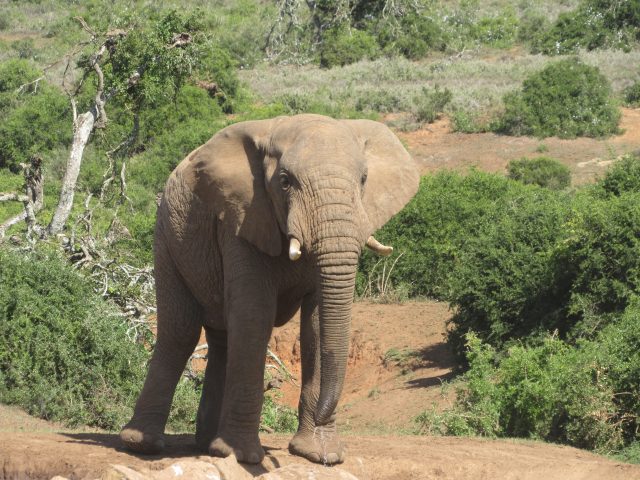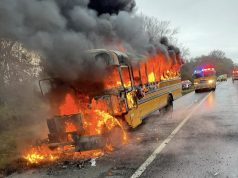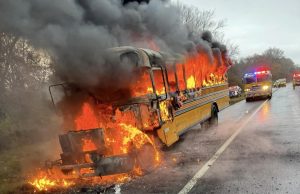By Henry Bender
Hey guys.
Karen and I are back. Two weeks ago we departed Cunard’s Queen Victoria in Southampton, England, the ship that sailed us around the world, and boarded her sister, Queen Mary 2, for our final run to the Big Apple.
While coming across the “pond” I kicked back and read Martha Gellhorn’s memoir: “Travels with Myself and Another.” Gellhorn, as you may or may not know, was a journalist, novelist, and travel writer. She was also Ernest Hemingway’s third wife. She died in 1998.
Anyhow, one particular line from the Preface jumped out at me: “The only aspect of our travels that is guaranteed to hold an audience is disaster.”
Since being home, I’ve realized how true this statement is. Why just the other day I met some friends for drinks and was telling them about the giant land tortoises I saw in the Seychelles — that archipelago of 115 islands that lies east of Africa in the Indian Ocean just south of the Equator — when I got blindsided by questions that had nothing to do with tortoises. Or the Seychelles.
“Did you see the blown up churches in Sri Lanka?” I was asked. My friend was obviously referring to the horrific Easter Day bombings.
“No,” I said politely. “We’d left Colombo 24 days before that happened. We were already in the Atlantic Ocean headed for the Canary Islands.”
“How ‘bout New Zealand? You were there, right?” asked another.
“Yes, but not during the mass shootings. Karen and I were in Viet Nam.”
“Well, you must’ve seen Cyclone Kenneth’s devastation in Mozambique?”
“Only on television,” I said.
The looks of disappointment that spread around the bar were so disheartening I bagged speaking further of tortoises, the Seychelles, or any other aspect of my travels. And you know what? No one cared.
Consequently, I’m a tad reluctant to write this final letter for I’m worried you’ll be bored. As Gellhorn has pointed out and I have discovered, travel without trials and tribulations often makes for lousy story telling. And honestly, I don’t have any shocking, breathtaking, electrifying, mind-blowing tales of disaster.

Karen, and I were gone 121 days, visited 23 countries, 31 different ports-of-call and all went well. No one threatened us with an AK-47. We weren’t pick-pocketed. We didn’t get sick. Geez, we didn’t even catch a cold. The closest we came to a fallout was a pirate alert in the Indian Ocean. As part of a drill, everyone had to return to their staterooms in case we encountered “pirate activity.” That was it.
So dear reader, I offer my humblest apologies for not getting malaria, for not being robbed, for not nearly dying, and ask that you indulge me for one last experience from our world odyssey — a visit to South Africa’s Schotia Game Reserve.
Queen Victoria had arrived early morning in Port Elizabeth, South Africa’s fifth largest city and third largest port, on day 98 of our cruise, and my dear wife Karen, who loves animals, decided she wanted to see Africa’s Big Five — the lion, leopard, rhinoceros, elephant, and Cape buffalo. Or at least as many of them as possible. So, she booked us on an expedition with Schotia Safaris. Located 40 miles north of Port Elizabeth, this is the oldest protected game reserve on the Eastern Cape and has been cared for by the Bean family for over six generations.
Well, after an hour’s bus ride, we boarded a Land Rover — a 12-seater topped with a canopy — and bounced our way along a rutted dusty road that made a circuitous path across rolling grasslands filled with bushes, trees, and thick brush. After maybe five minutes, we spotted two Cape eland.
“They’re one of the largest spiral horned antelopes in the world,” said, Mervin, our guide. “The bulls sometimes weigh 2,000 pounds.” The two eland stood motionless within the brush as our cameras and cell phones clicked away.
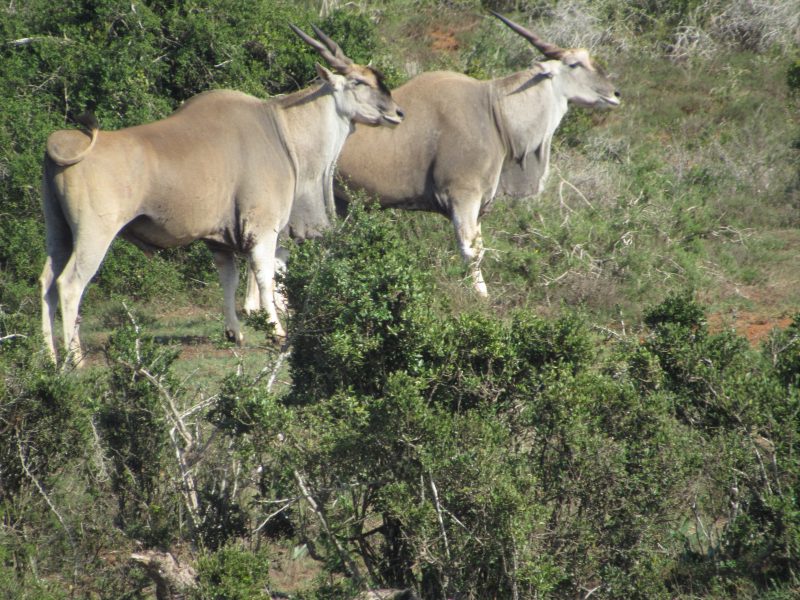
Moving on, Mervin pointed out the reserve’s namesake — a 30-foot tall schotia tree — telling us that in springtime, its oval canopy blossoms with red flowers filled with a sweet nectar. He also explained how elephants have a field day eating the leaves.
“Sometimes they topple the trees over to reach the higher branches,” he said. “So, we’ve placed beehives around the trunks.”
“That’s cruel,” Karen whispered.
“Yeah, but it works. Look how full it is,” I said.
Up ahead some zebras were gazing.
“Is it true their stripes act as a cooling mechanism?” asked one man.
“I think so,” said Mervin. Then he launched into a complicated explanation that lost me.
“Can they be domesticated?” asked another.
“Nope,” said Mervin. “Zebras have a mind of their own. They can’t be trained.”
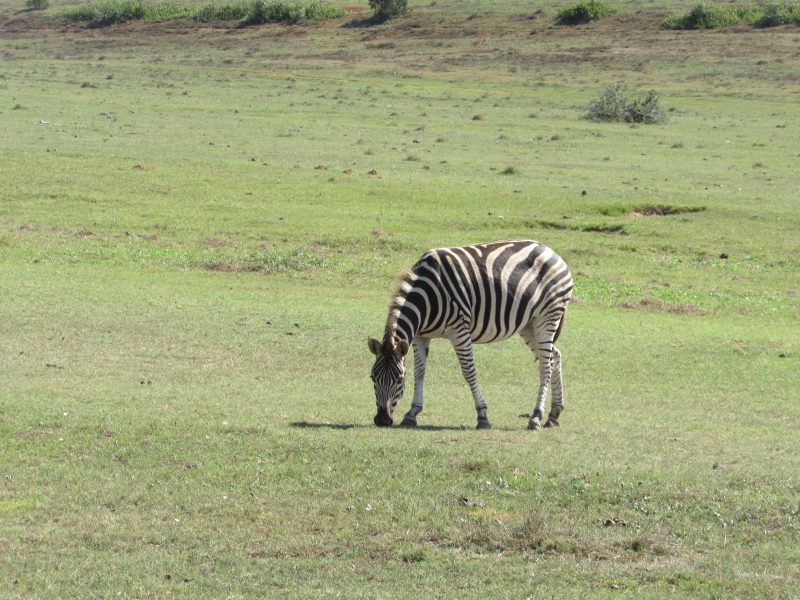
Across the way a pig-like creature, with three piglets in tow, busied itself plowing its face into the ground. “What the heck is that animal?” someone called out.
“That’s a mama warthog, a wild pig,” said Mervin. “She’s searching for bulbs and tubers. Stuff like that.”
I looked closely and could see her elongated snout and tusks and her hairy mane. The warts, though, I couldn’t quite make out.
A few minutes later we were bouncing across a gully so hard I thought my teeth might shake loose. Karen, holding on to me, asked, “How’s your back holding up?”
Seeing my camera and water bottle flopping aimlessly in my lap, I said, “Okay for now, but I don’t know how much longer.”
At which point Mervin called out: “Anyone here seen any of Africa’s Big Five in the wild?”
No one answered. Apparently everyone’s Big Five viewing had been like Karen’s and mine — limited to zoos.
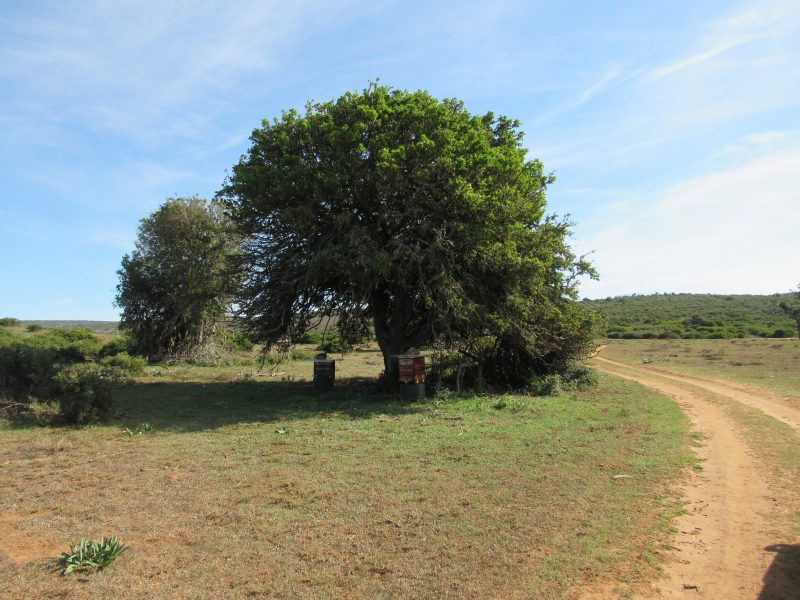
When we finally reached a smooth patch in the road, a lady in front of me asked, “What about tigers? Why isn’t it the Big Six?”
“No tigers in Africa,” I mumbled to Karen.
A second later Mervin confirmed my statement. Then he went on to tell us that the Big Five term was first coined by big-game hunters. And that the lion, leopard, rhino, elephant and Cape buffalo are considered the most challenging to kill on foot.
“Believe it or not, the Cape buffalo is actually the most dangerous,” he said, steering the Land Rover off the dusty road. Pulling up close to a clump of thick bushes, he killed the engine. “There’s one over there,” he said, pointing.
“Wow! He’s beautiful,” said Karen.
The buffalo’s intimidating rack of up-swept horns moved slightly as he munched on the grass.
“More hunters have been injured or killed by Cape buffalo than any other of the Big Five,” said Mervin. “Notice where the base of his horns come together. That’s called a ‘boss’. It acts as a shield.” The buffalo’s dark gray, almost black body grew bigger and bigger the closer he came to us. “He’s used to people. That’s why we can get so near,” said Mervin.
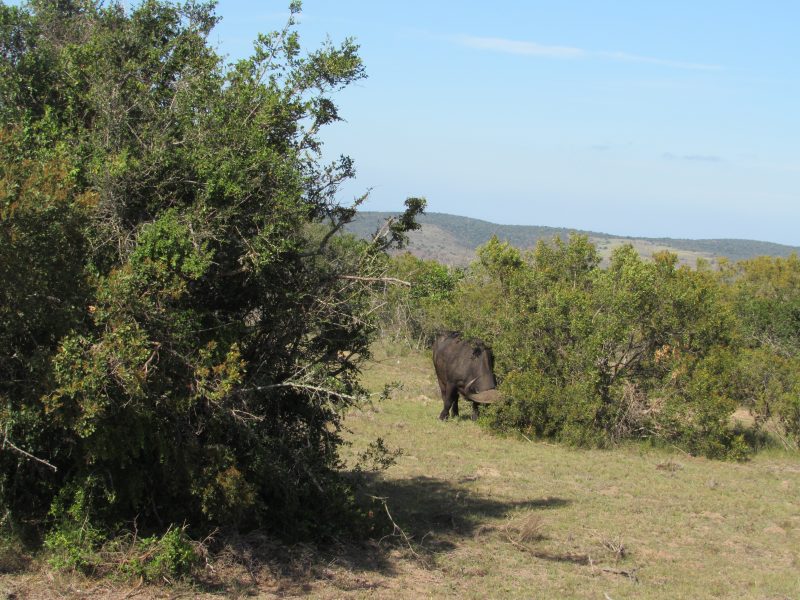
We left the buffalo and moved further inland. Creeping along where the brush grew thicker and thicker we happened upon a lone giraffe. When he noticed us, he stopped eating and stood rigid.
“They aren’t hunted are they?” Someone asked.
“Certainly not on this reserve,” said Mervin. “But, yes, they are.”
Nearly everyone gasped.
“And unfortunately, the International Union for Conservation of Nature has now placed them on the ‘Vulnerable’ list. Meaning, they might become extinct in the very near future,” Mervin explained.
Not too far away the thick brush gave way to a small clearing, and Mervin held up his hand, signaling us to be quiet, as he maneuvered us into the glade. Then he shut down the Land Rover. “Check out the lions,” he said, pointing toward a shady spot by the bushes.
“I can’t believe we’re seeing this,” said Karen. “Can you believe we’re so close to them?”
Napping peacefully, no more than 30 yards away were two lions — a male donning a blondish brown mane and his loved one. Hearing us, the male sleepily opened his eyes. He rose on all fours, roared, and then lay back down. His better half never opened her eyes.
“Lions usually don’t bother with humans,” said Mervin. “Unless of course they feel threatened or cubs are around. You could probably walk up to them and they’d run away.”
We stared at them at least 10 minutes, clicking photos, before the male got up and walked away. His female counterpart remained sleeping.
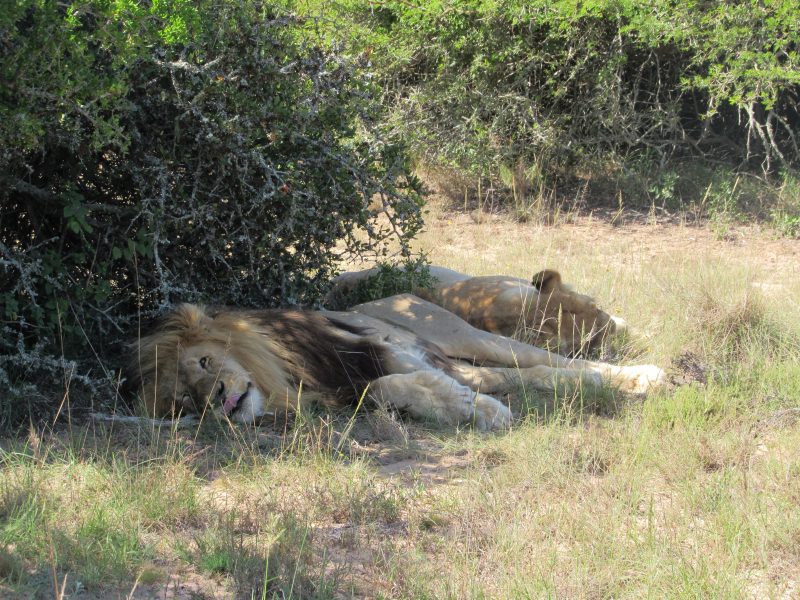
It was now past noon and we headed back onto the dirt roadway. After driving up and down some rolling hills, we came to a traditional lapa or meeting place, complete with fire pit and thatched roof. Several 4x4s were parked outside and we joined other animal enthusiasts for a delicious lunch of lamb stew, chicken, rice, and veggies. Of course, beer and wine were served, too. And soft drinks.
After an hour we were back out in the brush. Mervin had heard from another guide that a couple of rhino were nearby. So, we headed off in that direction, passing more eland and zebras. We even saw a wildebeest — a species of antelope.
As he drove, Mervin lectured us on the merits of rhino horn, telling us how Asians grind it into powder, dissolve it in boiling water then drink it as a cure for gout, rheumatism, typhoid, and headaches.
“The Vietnamese claim it works like Viagra,” he said, laughing. “Some think the concoction will even rid Satan from their soul.”
Before long, we were sitting within 40 yards of two rhinos.
“They’re white rhino,” Mervin said, almost whispering. “They’re grazers. See their mouths. They have a broad upper lip.”
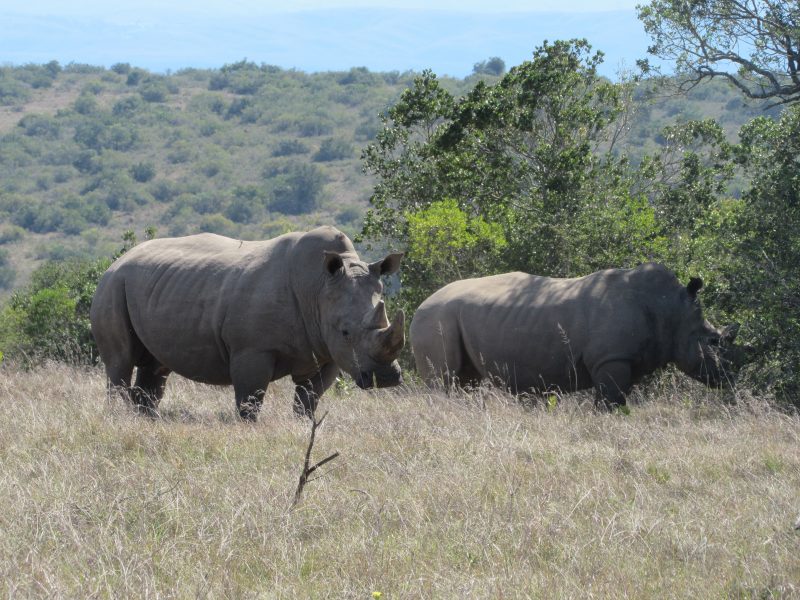
The rhinos’ heads were drooped, and they were chewing away on the grass. “The Dutch used their word wijd; it means ‘wide’ to describe the mouth,” Mervin continued. “When the Brits came, they thought the Dutch were saying ‘white’. Hence, their name: white rhino. Black rhinos, their counterpart, are a little different. They have a hooked lip for twisting branches and leaves off bushes and small trees.”
Then sorrowfully, he said, “Poor rhino. They’re facing extinction now. Wealthy Asians are buying up horns left and right on the Black Market. To them, horns symbolize wealth and social status. In fact, horns have become so valuable poachers sneak into protected game reserves to get them. They fly in at night by helicopter, knock the animal out with a tranquilizer gun, and then hack off its horn. It’s terrible.”
No one commented. Instead we stared blindly at the two rhino grazing peacefully together. Before long, the two giant beasts, their horns intact, turned tail on us and disappeared into the brush.
“What are our chances of seeing a leopard?” a man two seats up from me asked.
“Very slim right now,” answered Mervin, turning on the engine. “They’re nocturnal so we usually see them on night expeditions.”
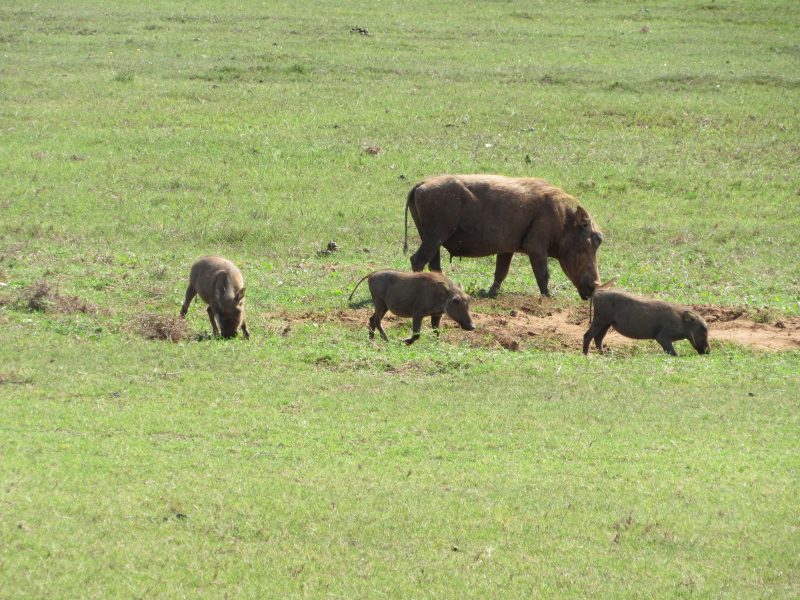
For another hour we drove around observing herds of eland and zebra. Mervin filled us in about the different plants and trees and showed us the watering holes where water is pumped in for the animals. At one point, an ostrich nearly the size of our Land Rover scooted across the road, but was gone before I could capture him with my camera.
It was getting close to the time when we had to leave, when Mervin got a call on his radio. “Elephants have been spotted in the south sector,” he announced. “Let’s see if we can find them.”
Fifteen minutes later, we joined three other 4x4s and watched a family of elephants emerge from a dense thicket, their ears flapping, and their trunks swaying. Not in any hurry, they paraded single file across the road between the vehicles.
“They’re so beautiful,” Karen said, her eyes beaming.
“A lot better than seeing them in the zoo; that’s for sure,” I said.
She nodded: “Or in some stupid circus.”
Heading back, we saw several more elephants splashing about in a watering hole. Mervin pulled up close to them. “They’re just cooling off,” he said.
“Well Babe,” I said to Karen. “You must be happy. We’ve seen four of the Big Five.”
“I am,” she said. “I really am.”
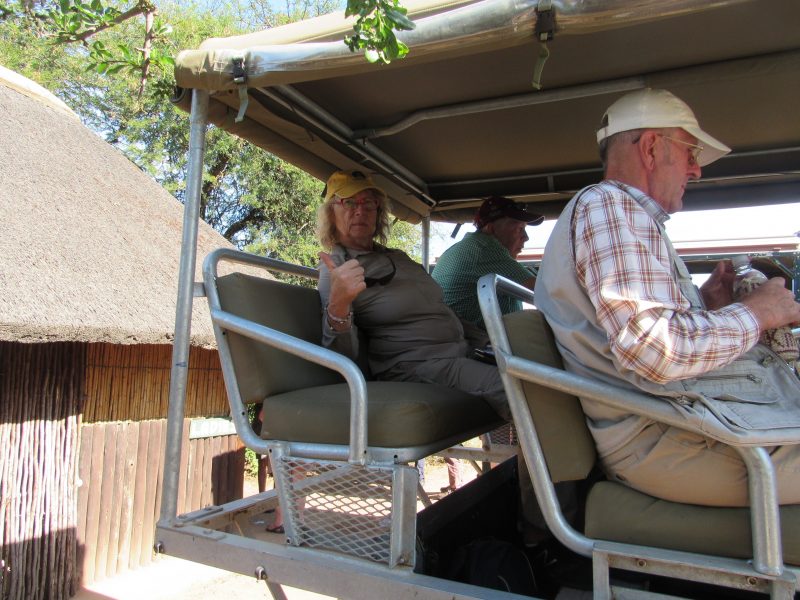
Author’s note: Well, my friends. Thank you for indulging me this one last time. It’s been a pleasure these past five months telling you about our around-the-world adventure. These letters were aimed to be informative in a pleasing manner. If you found them entertaining, and by chance enlightening, then I hit my mark.
Thank you.
PS: If you’re contemplating a world-wide journey, my advice is to seek out Barbara Lischin at Wings Travel in Marmora. She’s travel agent extraordinaire.
Editor’s note: Henry Bender, of Ocean City, is a retired Ocean City High School English teacher turned full-time writer and global traveler. His seashore-themed book, “Stirring the Dust,” is a compilation of his articles and columns that appeared in newspapers and other publications. Accompanied by his wife, Karen, he wrote a first-hand account of his around-the-world cruise in five installments for MediaWize/OCNJDaily.com.


